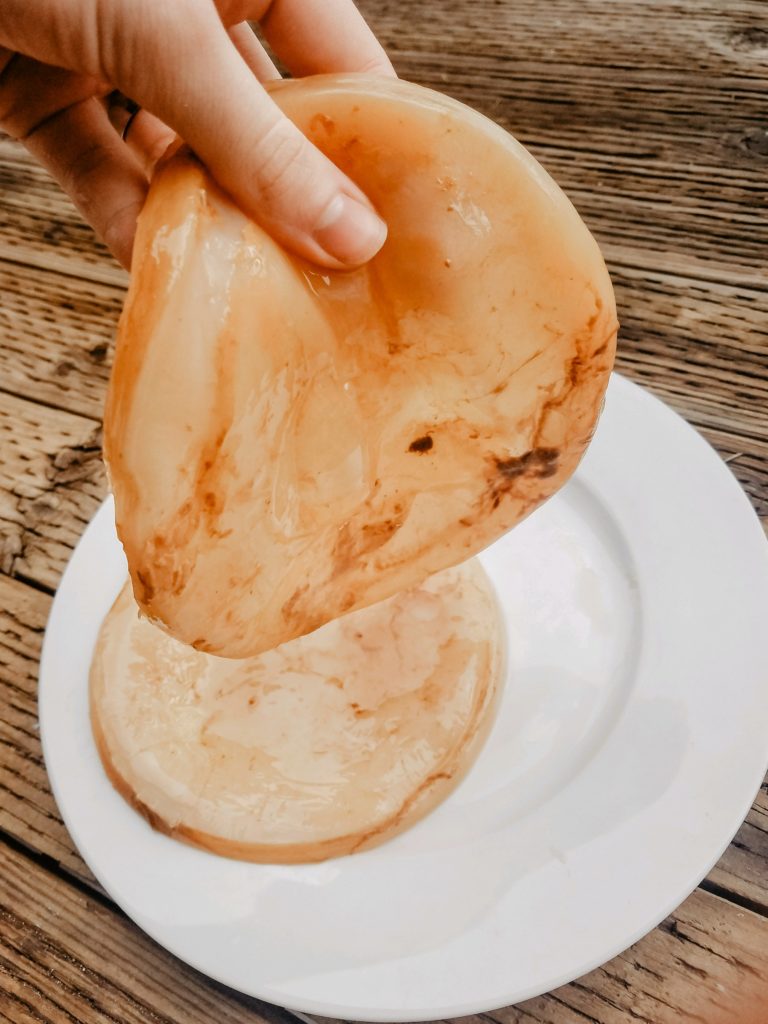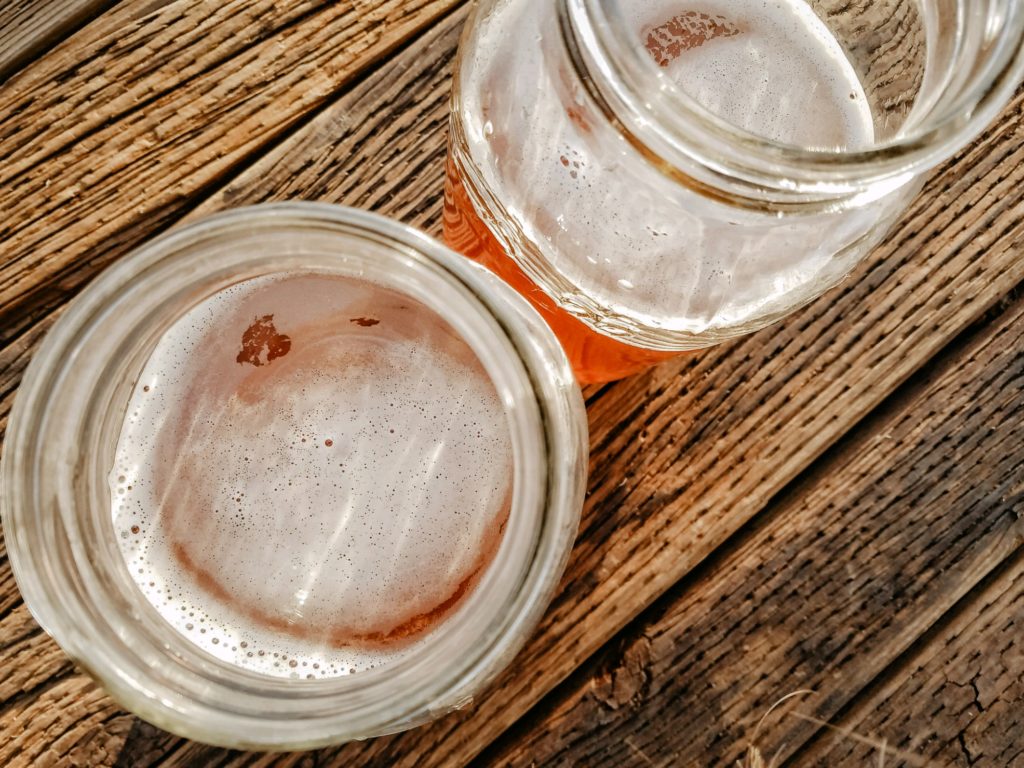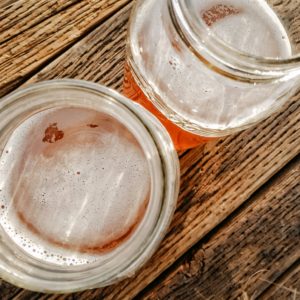It’s kombucha time! Time to man up!
We are going to be making something that may not be everyone’s cup of tea.
Well, fermented sweet tea that is.
And I know it isn’t for everyone, because my first interaction with this beverage had me plugging my nose and declaring it smelt of stinky laundry.
Perhaps I exaggerate a little. I have been known to do that at times. I have since come to love it in all it’s uniqueness.
But it does have a special vinegary aroma. You will see what I am talking about when you brew your own….
You will need:
- 4 organic black tea bags
- 1/2 cup organic sugar
- 3 quarts water
- 1/2 cup brewed kombucha – reserved from a previous batch of tea.
- Mother Scoby
- Gallon jar – or your choice of the fermentation vessel
Step One: Bring the water to a boil in a pot.
Step Two: Remove pot from heat and add your tea and sugar.
Step Three: Steep the tea in the water until the liquid has completely cooled to room temperature. This is important because we don’t want the heat of the liquid to kill our good bacteria!
Step Four: Once cooled, remove and discard the tea bags. Pour the sweetened tea in your gallon canning jar. Big glass jars always work well for me – but just make sure and use something that has a large surface area. Think wide. You want the scoby to be able to grow over the surface of the liquid. Do not use a metal container.
Step Five: Add your scoby to the liquid. Plop!

Step Six: Pour in your cup of brewed kombucha.
Step Seven: Cover the liquid and allow it to hang out for a week or so. I cover mine with a paper towel doubled up and secured with a hair tie. But you could use a thin cloth – just make sure that its not air tight or the scoby will die, it needs to be able to breathe. Try to keep the container warm, but not hot. Between 75 and 85 degrees is ideal. The warmer the environment is, the faster the scoby will grow. You can let your batch go anywhere from a week to 3 weeks.
Step Eight: After a week or so, test your batch! This is where personal preference comes in. Some people, like me, like their kombucha very acidic. Some people like it a little more sweet. The longer you let the kombucha sit, the more acidic it will become, because the longer it sits the more sugar the scoby eats.

Step Nine: When you are ready to bottle, just remove the scoby (you will now have two: your original scoby you started with and a new one that has grown on the surface of the kombucha), along with 1 cup of the kombucha liquid that you will reserve for using in the next batch.
The mother scoby will become stronger and get more active each time it is used to prepare a new batch of kombucha tea, in which a new baby scoby will also grow. (Baby scobys may be discarded or given to friends.) When the mother scoby matures and is sufficiently strong, it will be much thicker and able to complete the fermentation process much faster than in previous batches.

Step Ten: You can store the brewed kombucha in whatever container you would like – I like using half gallon or quart mason jars. Use what you got – as long as you can get a nice, tight seal on the lid and it is sterilized and clean. The beverage will continue to carbonate as it sits. Keep ’em in the fridge once they are bottled.
Join the underground moonshine, I mean kombucha, revival. Your body will thank you.
Home brewing. Now THERE’S something that belongs on a homestead.

Kombucha
Equipment
- Glass gallon jar – or your choice of fermentation vessel
Ingredients
- 4 bags organic black tea
- 1/2 cup organic cane sugar
- 3 quarts water
- 1/2 cup brewed kombucha (reserved from previous batch)
Instructions
- Bring the water to a boil in a pot.
- Remove pot from heat and add your tea and sugar.
- Steep the tea in the water until the liquid has completely cooled to room temperature.
- Once cooled, remove and discard the tea bags. Pour the sweetened tea in your gallon canning jar.
- Add your scoby to the liquid.
- Pour in your cup of brewed kombucha.
- Cover the liquid and allow it to hang out for a week or so. Try to keep the container warm, but not hot. Between 75 and 85 degrees is ideal. The warmer the environment is, the faster the scoby will grow. You can let your batch go anywhere from a week to 3 weeks.
- After a week or so, test your batch! This is where personal preference comes in. Some people, like me, like their kombucha very acidic. Some people like it a little more sweet. The longer you let the kombucha sit, the more acidic it will become, because the longer it sits the more sugar the scoby eats.
- When you are ready to bottle, just remove the scoby (you will now have two: your original scoby you started with and a new one that has grown on the surface of the kombucha), along with 1 cup of the kombucha liquid that you will reserve for using in the next batch.
- Store finished kombucha in a sealed container (like a glass jar) in the refridgerator.

[…] How to make kombucha […]